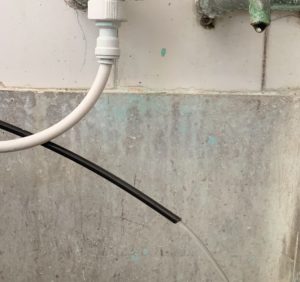The rejection water of the reverse osmosis systems is a concern for those growers who use these systems to obtain the best water quality for irrigation and can present itself as an issue for large producers. When we need large amounts of reverse osmosis water, we must know that the amount of water discarded will be at least twice as much as the water produced by the osmosis system. This is why we wanted to publish an article talking about the rejection water of the reverse osmosis systems and the different methods to minimize it and also how to re-use this water.
WHAT IS THE REJECTION WATER?
The rejection water is the waste that comes out from the reject pipe (black color) and is sent to the drain when using a reverse osmosis system. Once the tap water has passed through the sediment and carbon filters, it enters the reverse osmosis membrane, which will purify a certain amount of water and send to the drain another amount of water with the dissolved salts that we want to remove. The rejection water is a clean, chlorine-free water but with an EC between 15-20% higher than that of tap water.
REJECT THE MINIMUM AMOUNT OF WATER

Flow restrictor 400 l/min
The amount of water rejected by a reverse osmosis system will depend directly on the flow restrictor installed by the manufacturer. Many reverse osmosis systems are designed to eliminate 4:1, 5:1, 6:1 or even more. This means that for every liter of water produced, 4, 5 or 6 times more water is needed and will be sent to the drain (or garden).
GrowMax Water reverse osmosis systems are designed to reject ONLY (2:1) two liters of water for every liter of purified water. This saves a lot of water!
The more water that is rejected will have a direct effect on the life of the reverse osmosis membrane. Smaller amount of rejected water can decrease the life of the membrane.

Diagram of a reverse osmosis membrane
But in addition, two more factors must be taken into account: The EC of tap water and the inlet water pressure of the reverse osmosis system.
1 – THE EC OF TAP WATER
Reverse osmosis systems remove up to 95% of salts and heavy metals from the water, i.e. depending on the EC of the tap water, so will be the quality of the purified water.
The life of the membrane will depend directly on the EC of the tap water. The higher the EC, the life of the membrane will decrease due to the amount of salts retained. Although the positive part of this is that we will reject the minimum water quantity as possible.
2 – THE INLET WATER PRESSURE

The inlet water pressure on a Mega Grow 1000 system
Reverse osmosis membrane manufacturers recommend a minimum pressure of 4,3 Kg/cm2 (BAR) for the membrane to work in good condition. Therefore, water production will increase or decrease depending on the pressure of water entering the membrane. Insufficient water pressure will cause the system to produce less water while increasing water rejection. If we have a lower inlet water pressure than recommended, we will must to install a Pressure Pump Kit for the system to work in optimal conditions.
HOW CAN WE USE THE REJECTION WATER?
As mentioned above, the rejection water contains a higher amount of salts than the tap water. We have also commented that the reject water is sediment and chlorine-free, which will allow us to use it for other purposes. For example, by accumulating the rejection water in a tank we can use it to clean the growing rooms and cabinets, trays, pots, tools, etc. In addition, we can also use it for scrubbing floors or for water for washing up. We can also send the water to the garden, for irrigation of trees or plants that do not need a low EC water. Finally, for all those who have a swimming pool, do not hesitate to fill it with the rejection water generated by reverse osmosis system.


